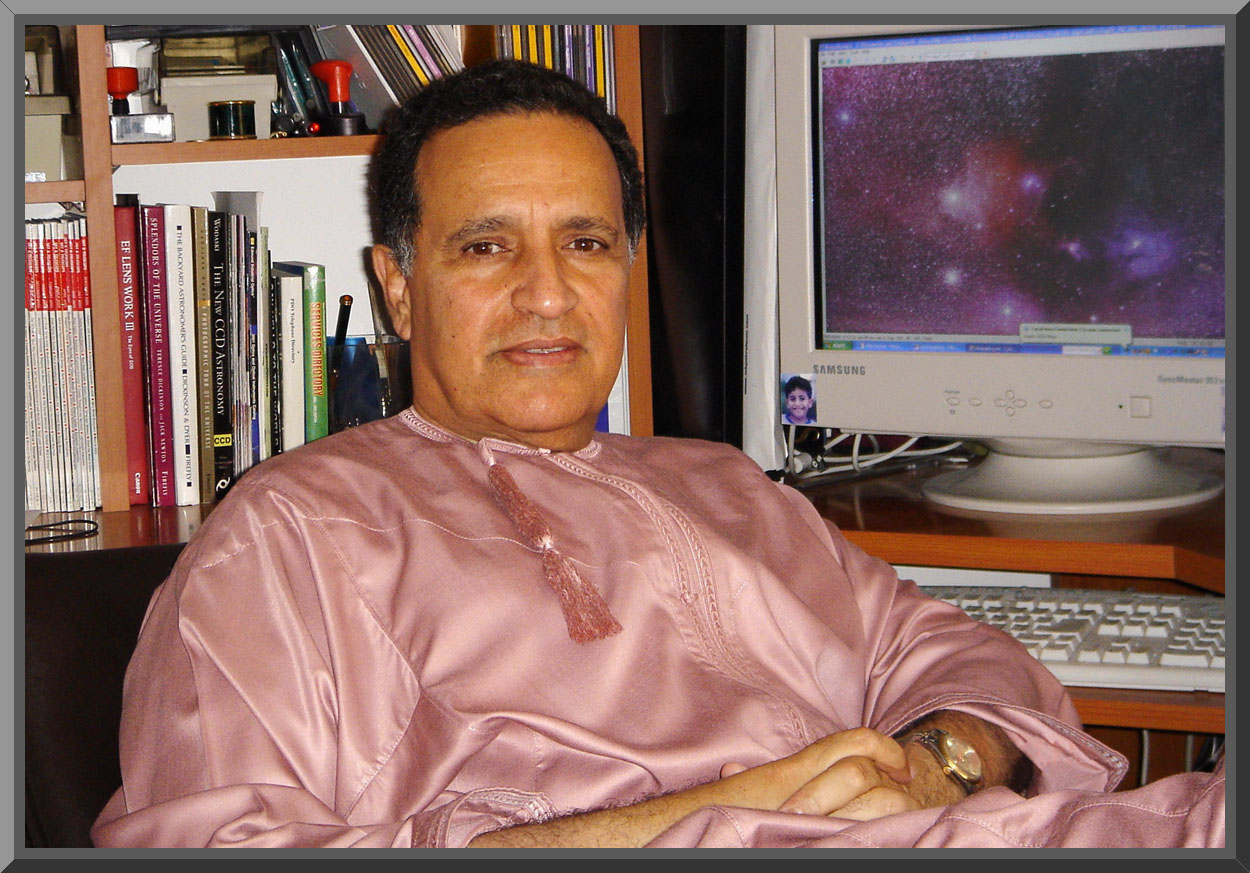|
Michael A. Stecker
|
|
|
|
Over here the weather is sort of perfect for the six months of winter astro-season, blue skies with temperatures between 20 and 30 degree C; and to be avoided if at all possible for the six months of summer, blue skies but with heavy haze and temperatures between 30 and 45 degree C. I first got interested in astronomy as a teenager in Zanzibar. Yes, some people actually live in such remote locations. Bought a book called “Teach Yourself Astronomy” and after months of determined effort I managed to identify Orion and Crux. I had to specially order my first scope, a 90mm achro, from Japan through a local photo store and it cost me some $10 total. Turned out they had a misprint on the invoice… I then managed to find Saturn and Jupiter. Ordered a custom adapter from England to connect an Exakta Varex SLR to it and even managed to take a photo of the Moon. End of astronomy for the next 30 years. Bought a Celestron Ultima 2000-8” in the late 1990s and rekindled interest. Since my main hobby has always been photography, I ended up acquiring all sorts of gizmos to enable astrophotography. Ah, the naivety of the innocent. We do believe the ad hype and the next gadget will achieve wonders… Struggled with the U2K for a few years and finally decided to upgrade the mount. Chose to go for an AP1200. Put my name on the waitlist and bought a Celestron CGE1400 to live out the wait. The CGE was quite an upgrade on the U2K and is reasonably capable with autoguiding and reasonable focal lengths, say <1500mm. My name on the AP1200 finally came up in 2005 and one of these days I’ll actually use the AP mount. It’s still in boxes somewhere. Cameras, another long saga. Started off with film and then salivated over an astro CCD, the SBIG Pixcel 237. This can be used on the U2K in Fastar configuration. The magazines paint an overly rosy picture as to what is possible with CCDs. Basically, if your home site is heavily light polluted, as mine is, you are condemned to suffering endlessly. But then you see all those beautiful images taken from “polluted suburban skies”. Unfortunately what one man terms “polluted” turns out to be dark sky nirvana compared to your own patch. So I ended up developing an objective method of measuring skyfog using a consumer digital camera. Finally, after years of slogging, I think I have found what works, what does not, and what is an exercise in futility. It’s much easier to know what you need to do to achieve beautiful astro-images than to actually do it. Step 1: lug all that stuff to a dark site…
Since my main interest is photography and secondarily astrophotography, I
have ended up being an avid user of Canon DSLRs and Canon lenses for much
of my astrophotography. For planetary imaging I use a C14 and a webcam. My
first attempt with a webcam turned out to be such a major leap from either
film or the SBIG 237 that there simply was no going back. Similarly my
first dabble with a Canon 1Ds using a 14mm lens on the Milky Way yanked me
away from astro CCDs, possibly forever. Talk about wide field. A 4x6ft
print of the Milky Way is breathtaking! No way can you go back to a
megapixel CCD. My latest toy is a Canon 20D modded to record everything in
full glory from 400nm to 950nm. The possibilities are endless… I’d urge
anyone fooling around in astro-photography to try out a modded Canon DSLR
and be pleasantly surprised at how revolutionary the latest cameras really
are. Astro CCDs? Heck, you still need an autoguider but if I was a
packager of astroCCDs I’d urgently also get hold of one of these modded
Canon DSLRs and gauge the competitive threat. Now, if only one can find a
self-contained autoguided mount that weighs less than 10kg and takes only
15 minutes to set up. Imagine sticking your 16 megapixel DSLR with some
humongous lens on it, I use a Canon 600/4, autofocus (yes, I do love the
one-click autofocus at night and it actually works on all the Canon
superteles) and off you go. Perhaps in a couple of years… My website:
http://www.geocities.com/samirkharusi/
|
|
|
